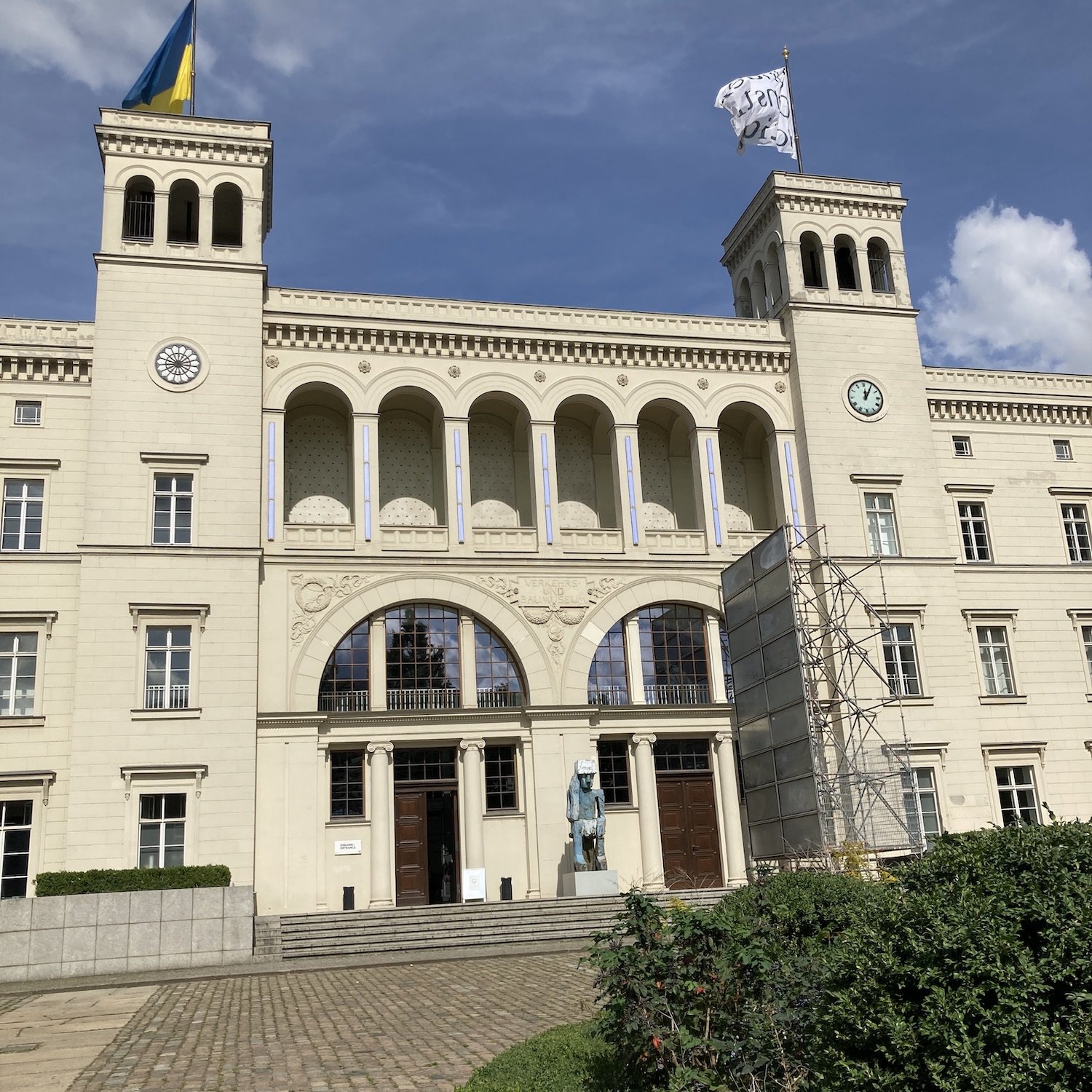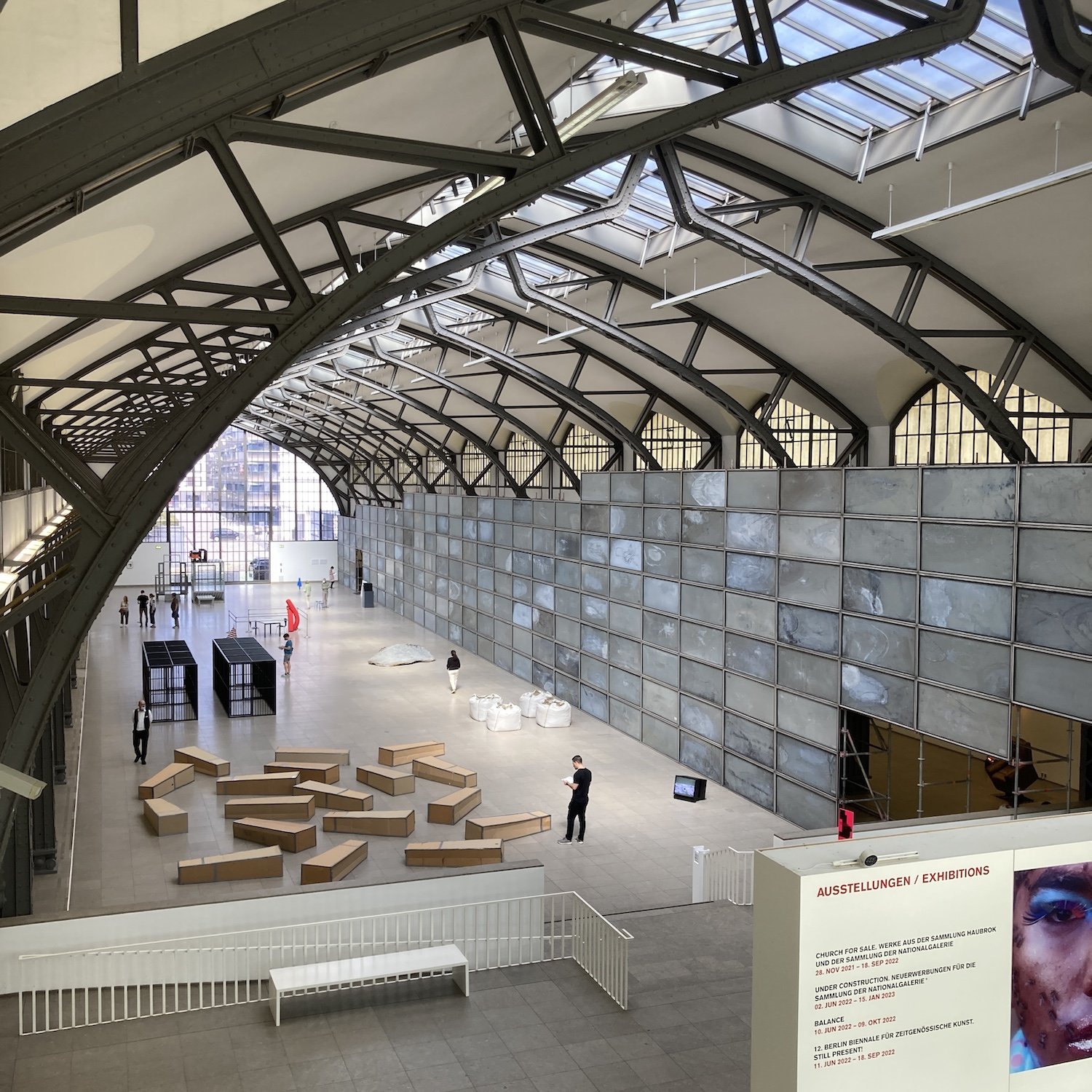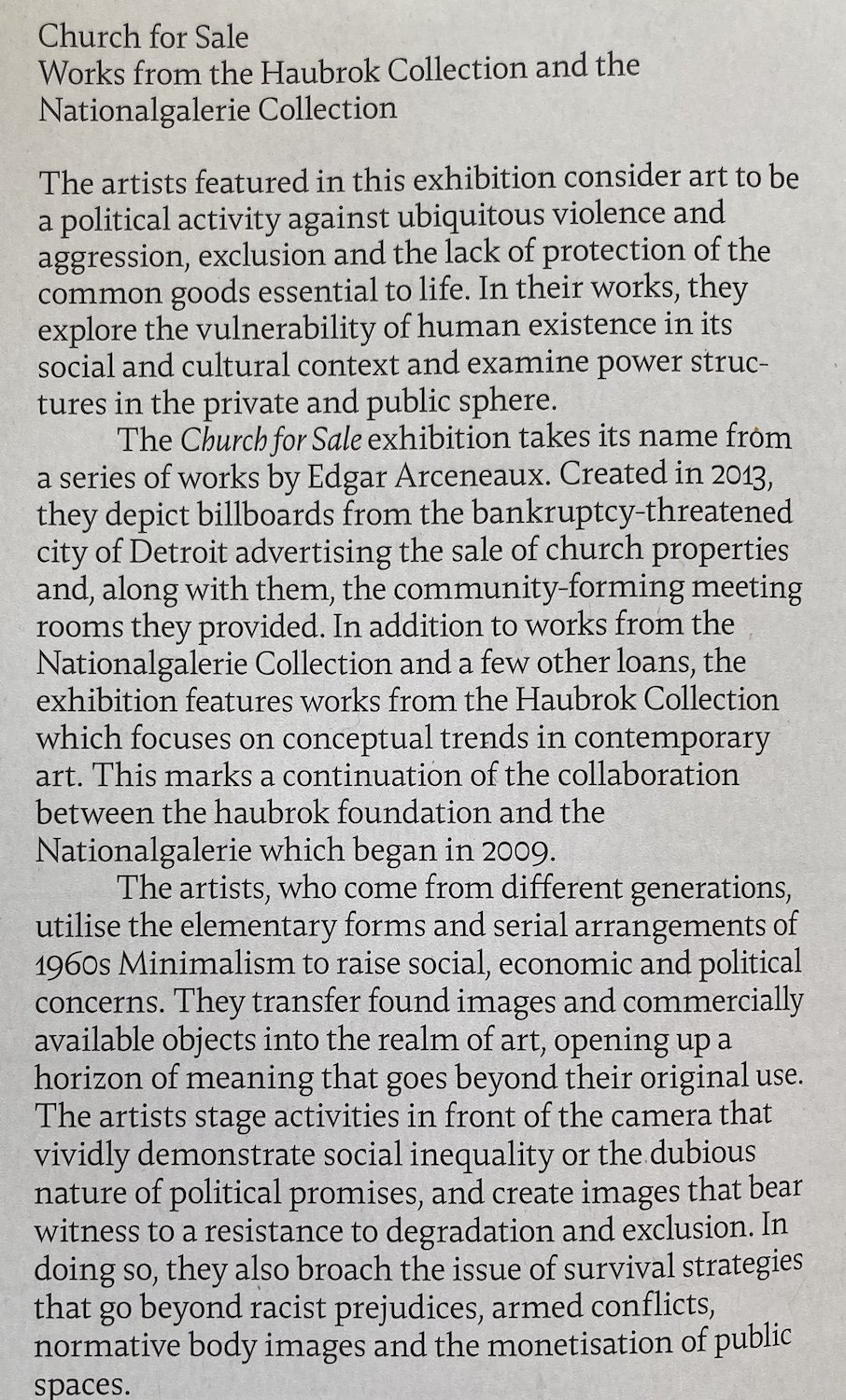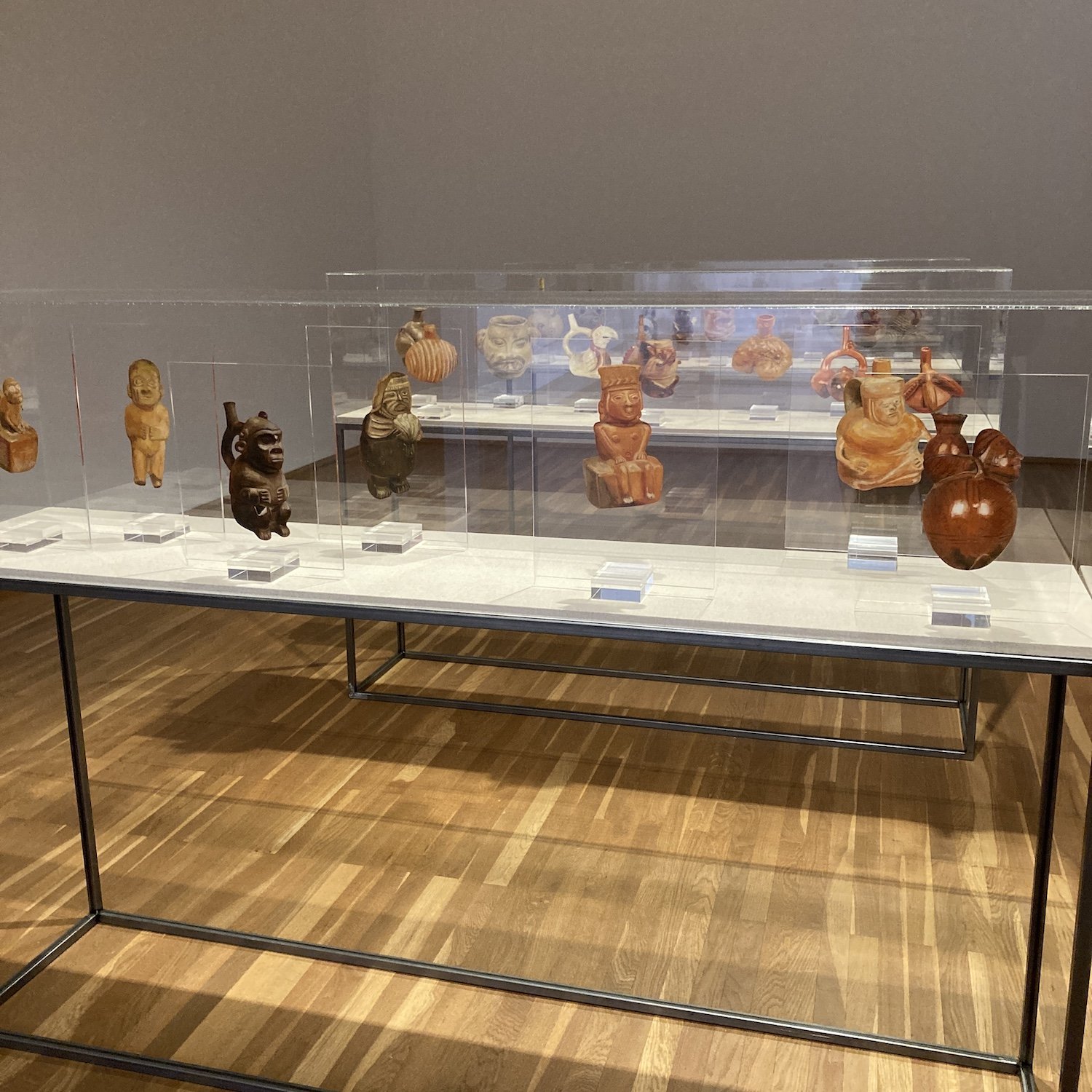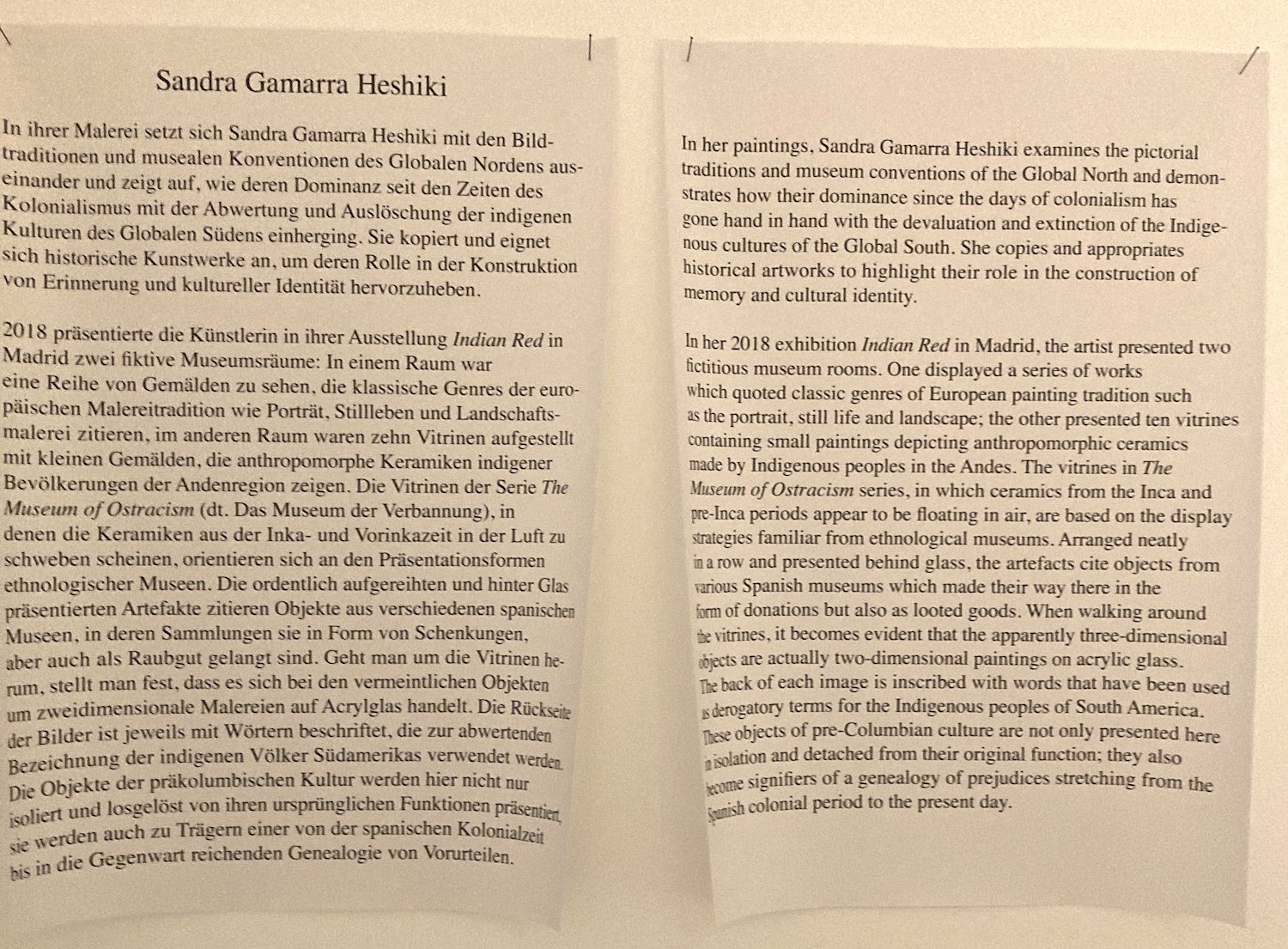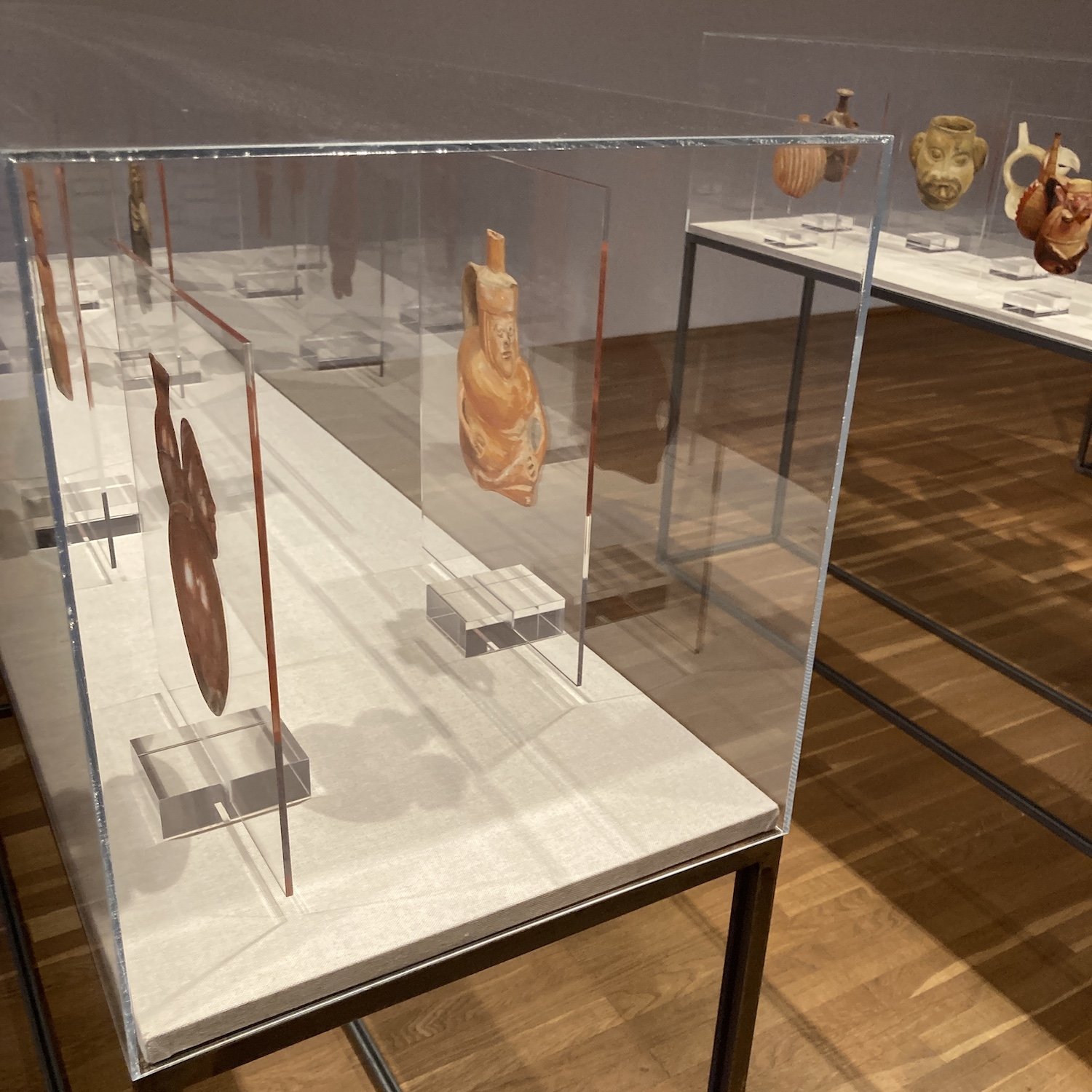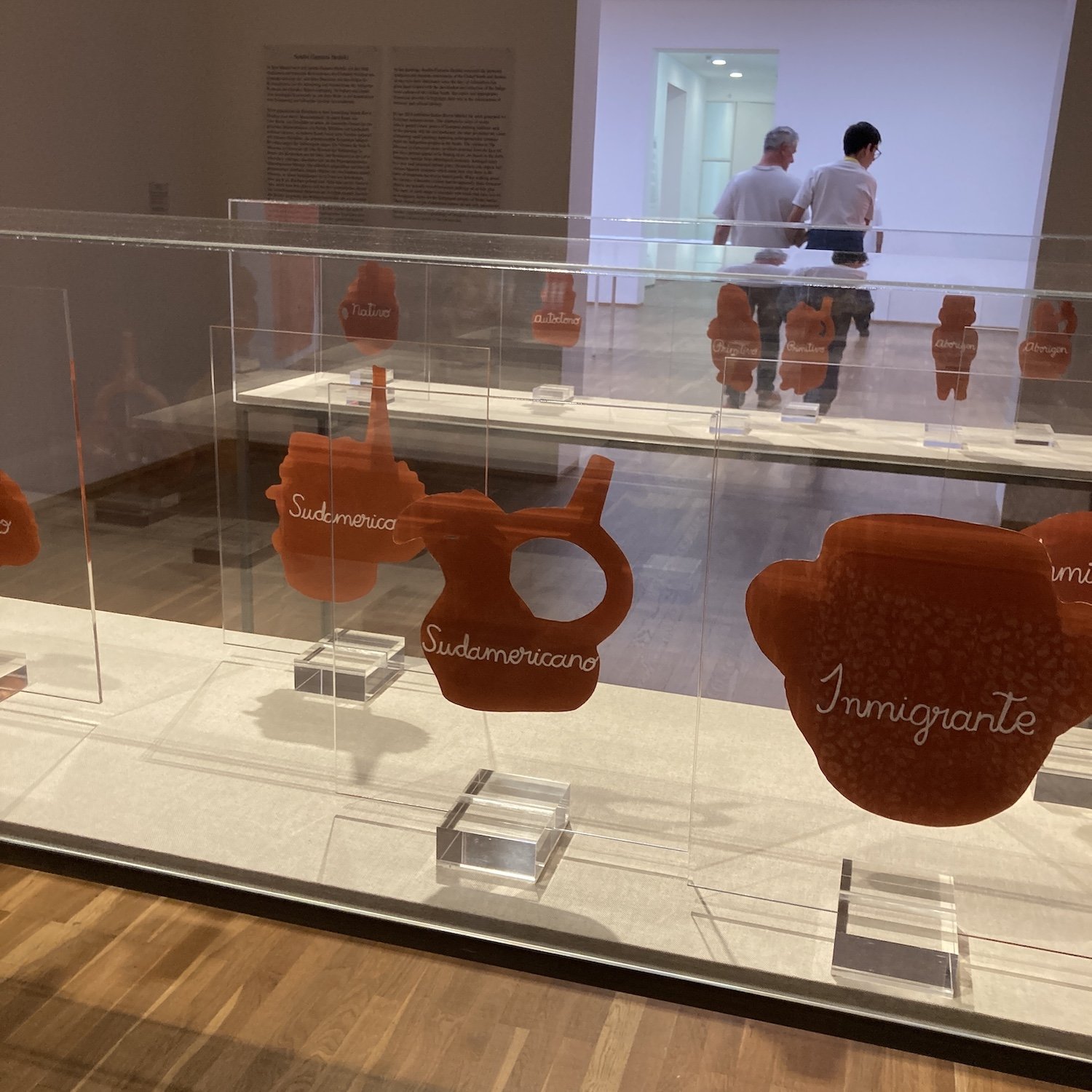To Berlin’s Hamburger Bahnhof Museum to see some contemporary art . The main exhibition called “Church for Sale” was what brought me there but inspiration and astonishment came from other exhibitions.
“They transfer found images and commercially available objects into the realm of art, opening up a horizon of meaning that goes beyond their original use.”
Maybe I’ve just got too familiar with this kind of conceptual transfer but I didn’t personally encounter newly extended horizons of meaning that contributed to my political or social awareness. This kind of work quickly loses its novelty and there has to be more beyond the novelty. It’s hard to fix, or describe, what that ‘more’ might be when claiming a place in the ‘realm of art’. The best I can do for the moment is to show 3 artworks that spoke to me and seem to deserve such a place.
From the Berlin Biennale, two pieces caught my attention: Birender Yadav’s Walking on the Roof of Hell and Tammy Nguyen’s paintings of the stations of the cross. In the exhibition of new acquisitions, I found the room-size installation Museum of Ostracism, created by Sandra Gammara Heshiki. Each reveals a deep concern for social justice at heart, and each for me is an artwork, in that the eye is caught, held, fascinated by materials, composition, form, colour, making. I’ll place photos of them below for your attention.
Walking on the Roof of Hell, Installation view
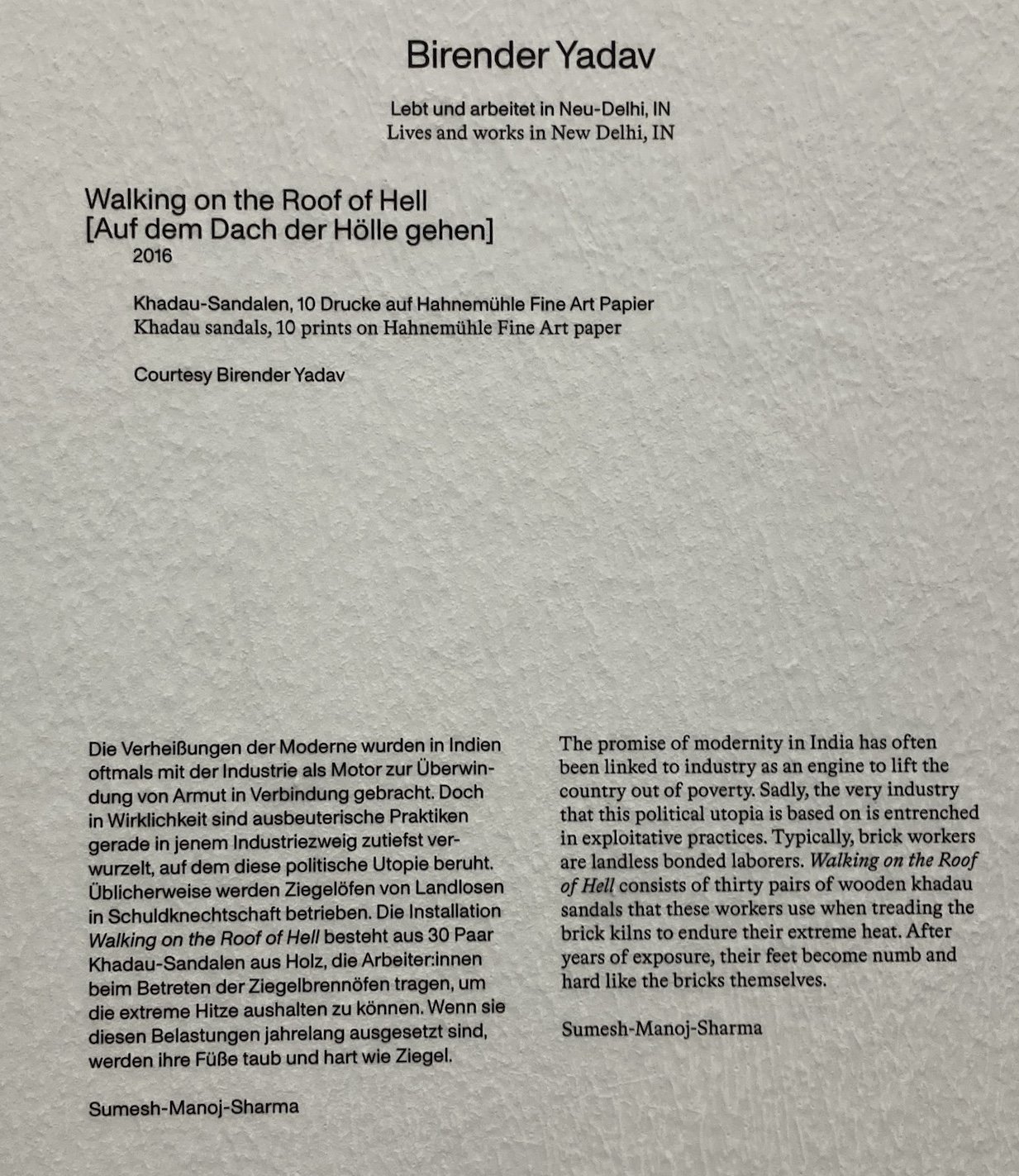
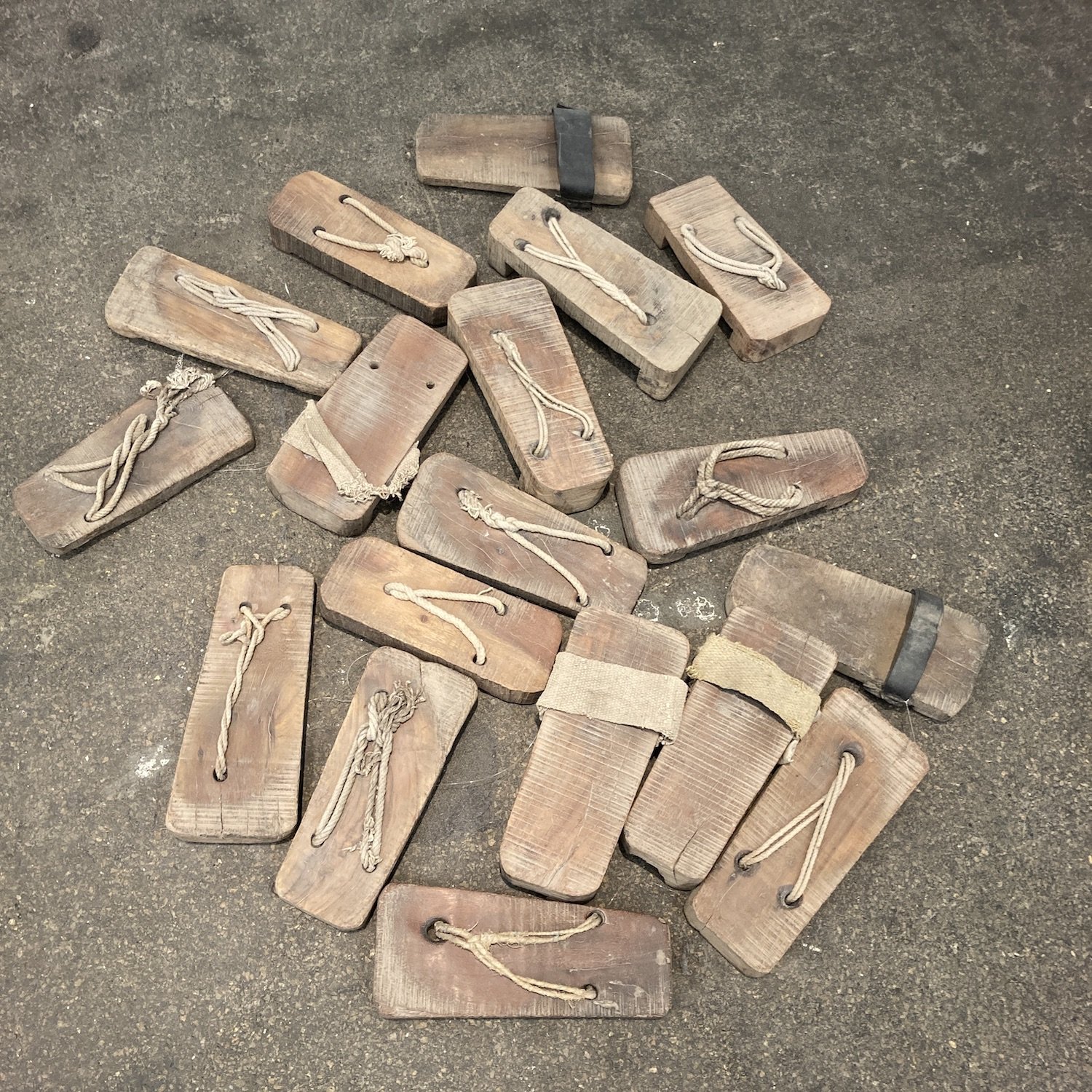
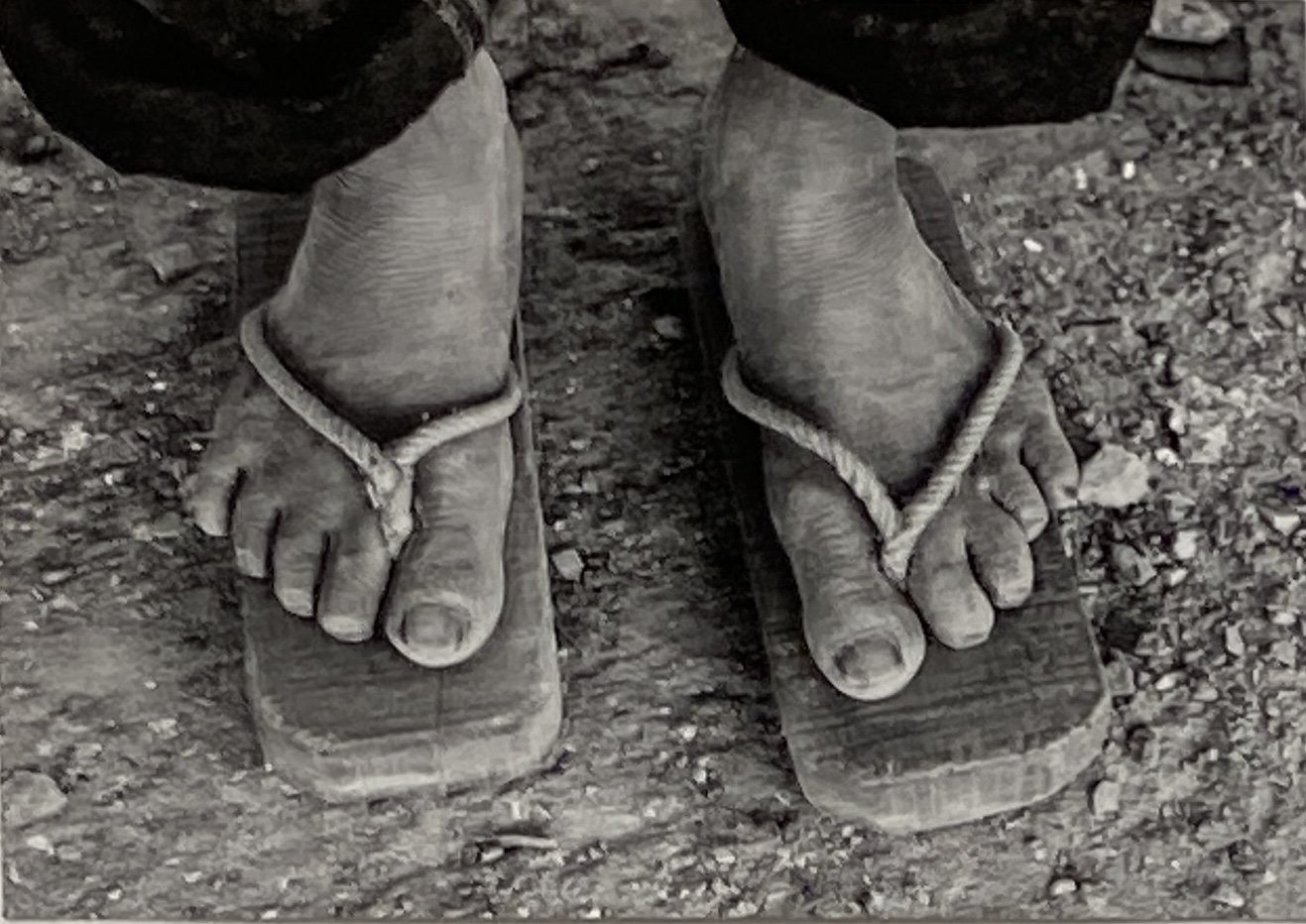
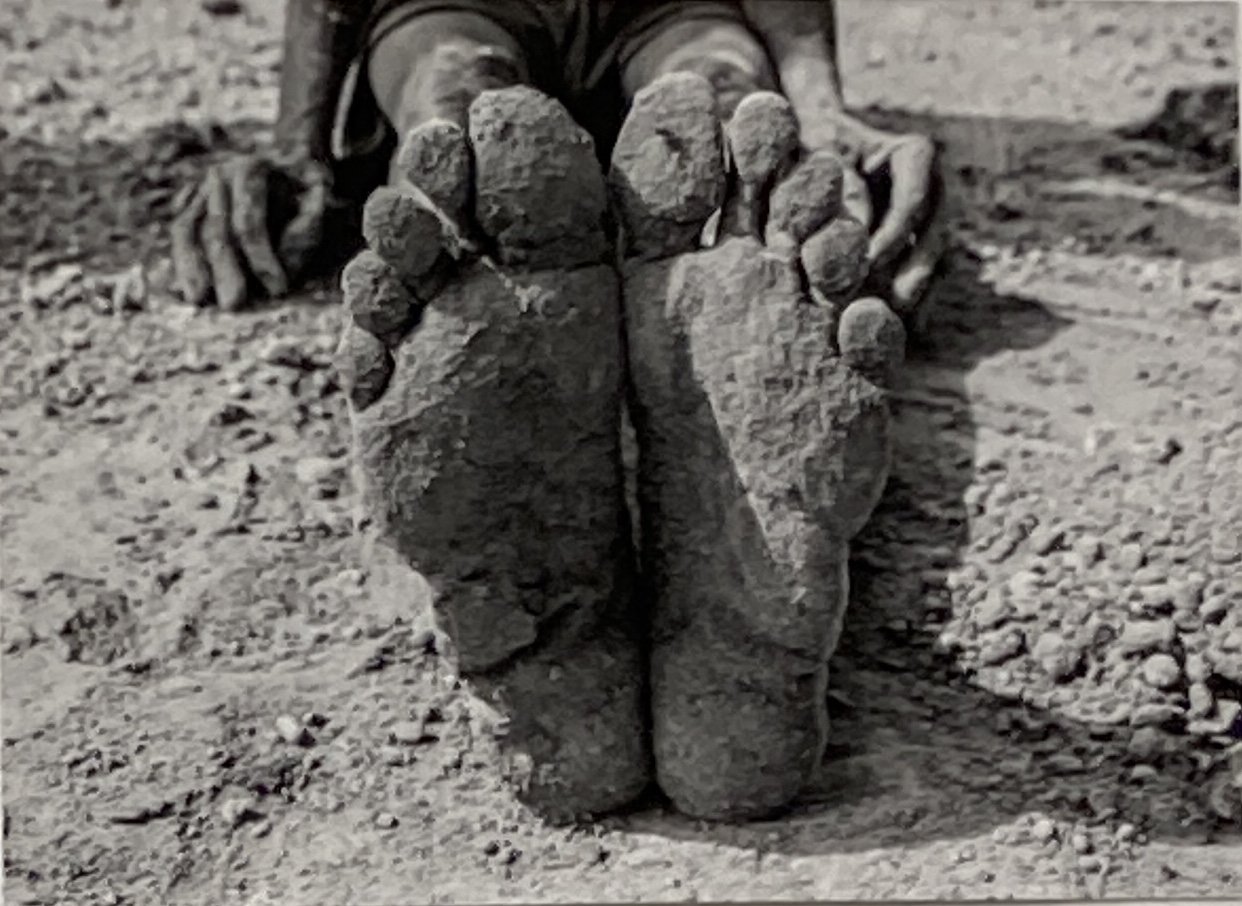
I related to the colours, textures and shapes of the wooden sandals in their arrangement on the floor. When I read about their purpose and looked at the photographs of feet, I felt appalled and sad. My empathy was activated by seeing feet in detail - memories of cutting my grandaughter’s tiny soft toenails and of rubbing cream into the weary feet of my mother when she was ill.
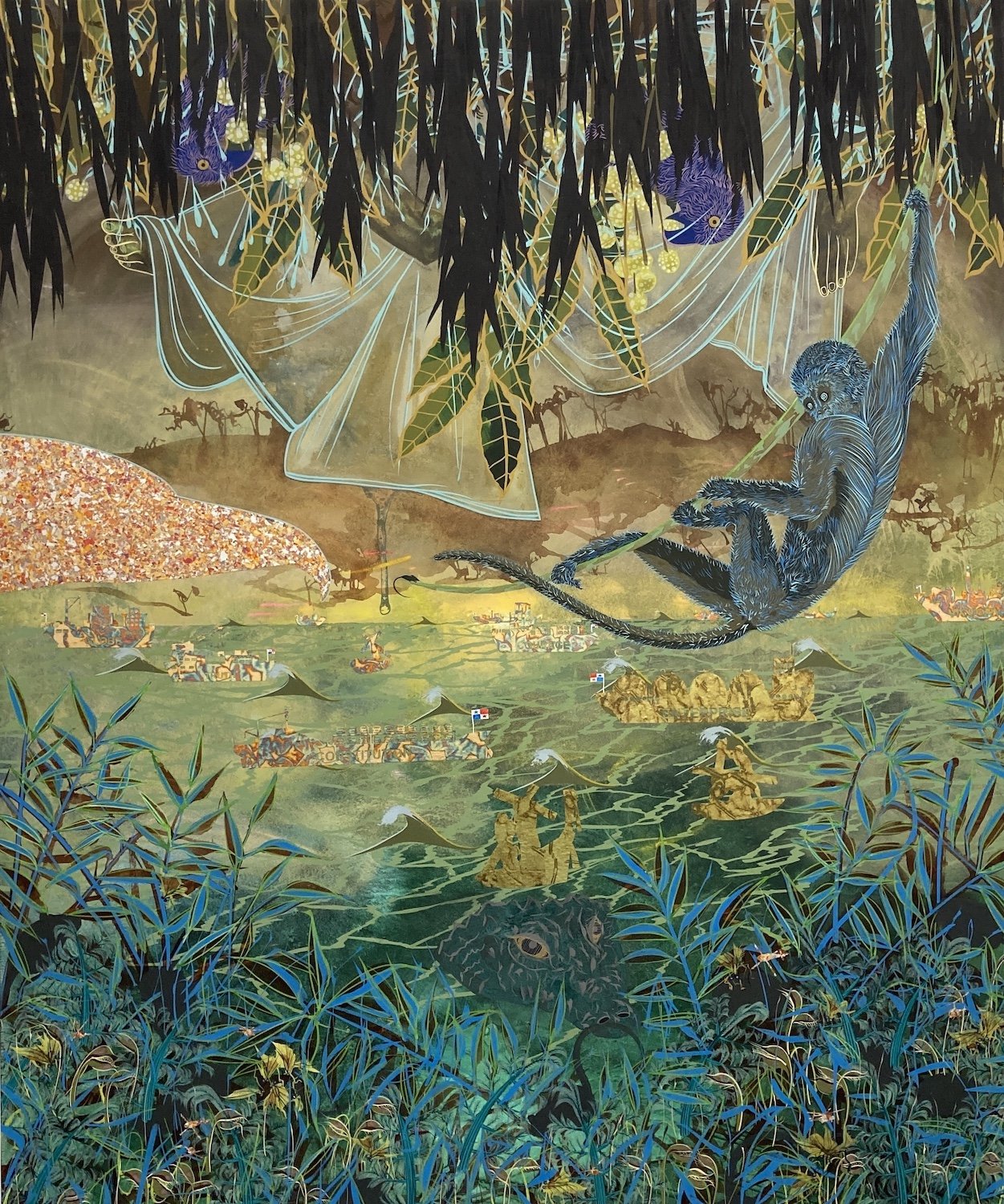
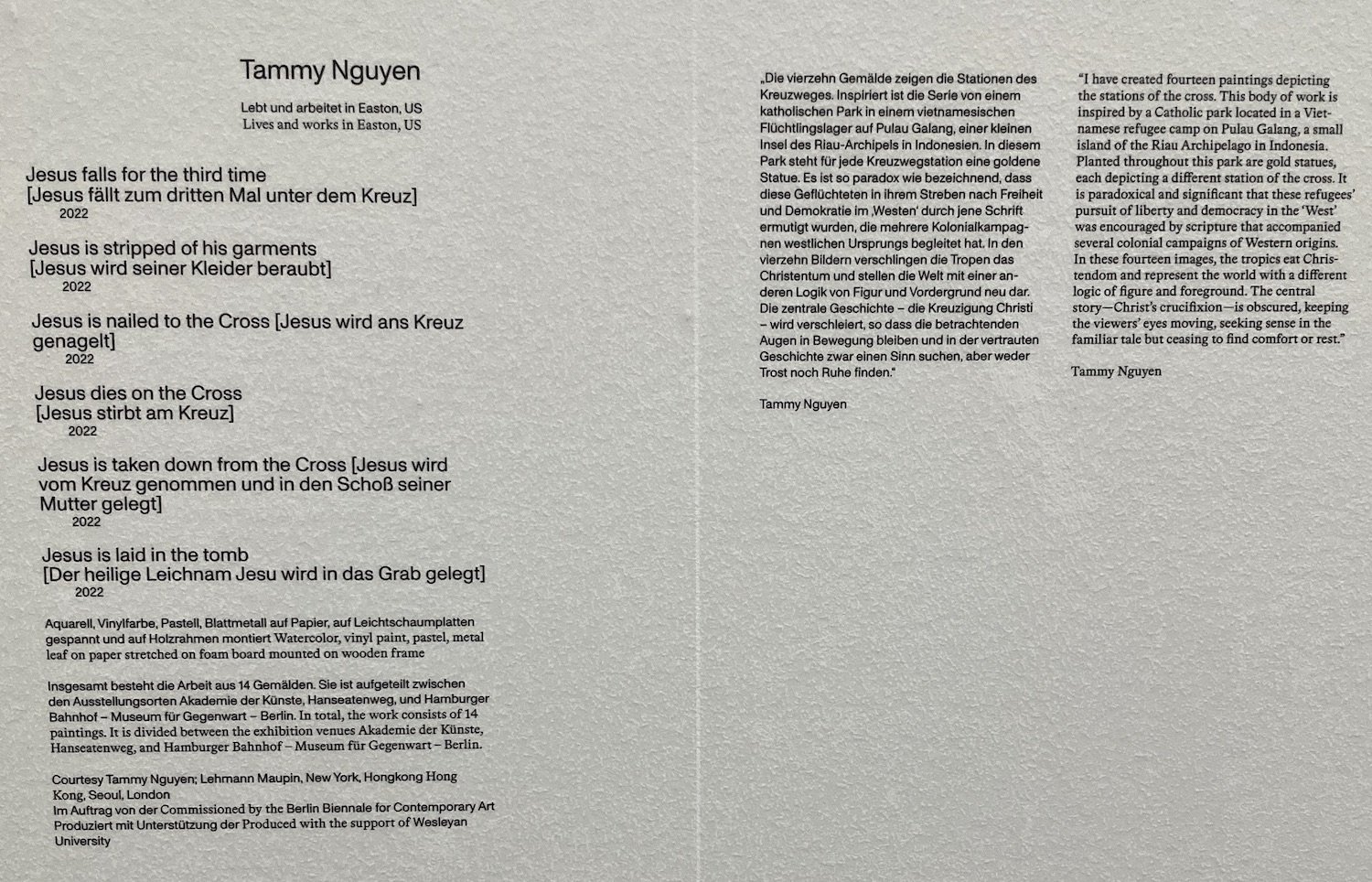
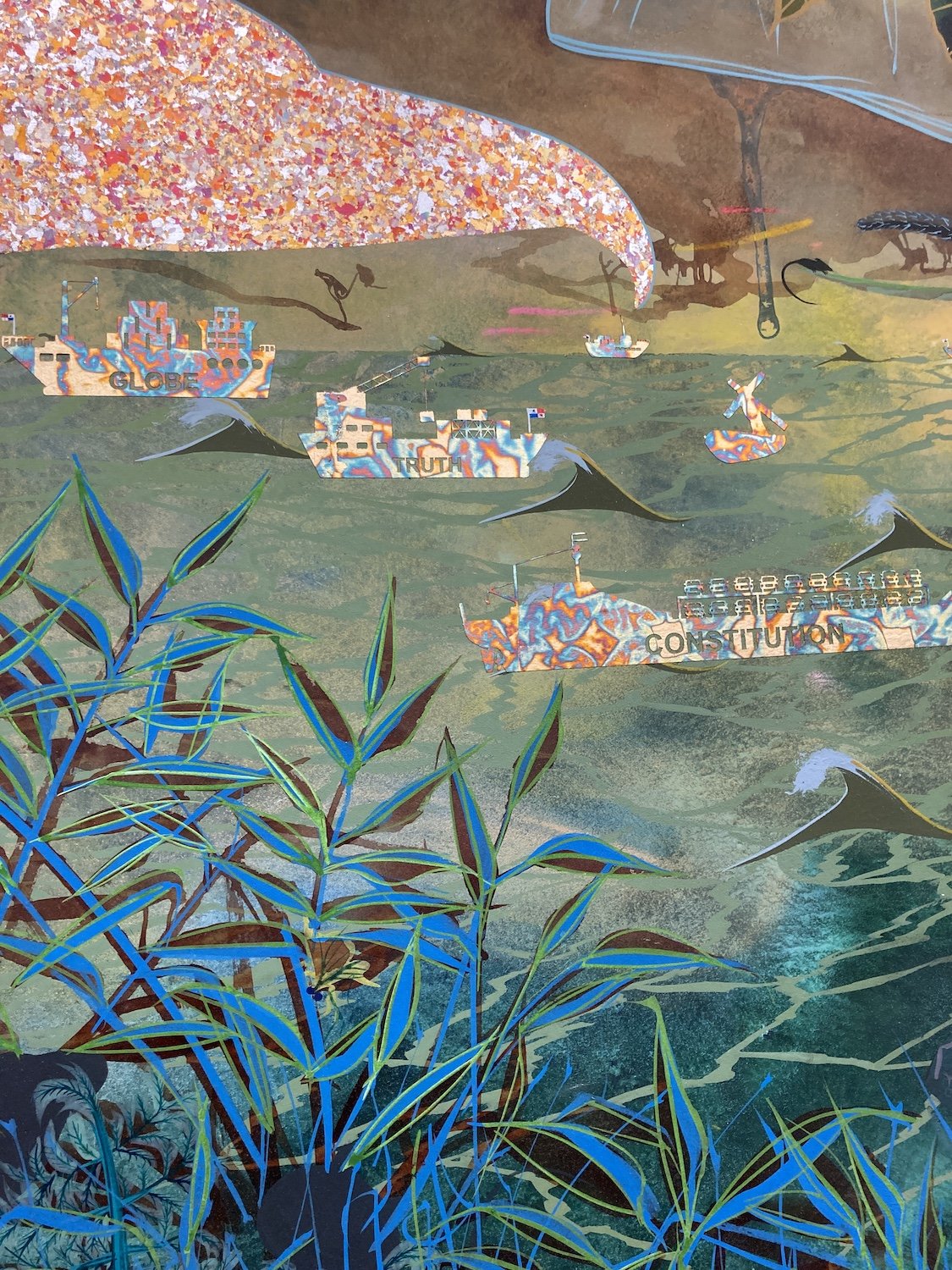
These paintings were so beautifully done - I gazed for ages at the brush strokes, the layers and the overlapping colours. I found the collages of ships and use of metallic paint. Again, the title information surprised me and sent me back to look at the content more closely, trying to find the fragments of the figure of Jesus and the details of the setting.
This display astonished me by faking a traditional museum display so cleverly - trompe l’oeil painting created 3d effects on flat sheets of acrylic. I was then forced to reconsider my initial reactions to the ‘objects’ and think about the fact that I found them intriguing and inspiring as artworks. I was taken in by the installation - how far have I been taken in by years of museum-visiting and by art history…? I’m still thinking about that.
Jan Martel suggests that good art is art that astonishes:
To be astonished is to be caught unawares by the revelation of realities denied or repressed in the everyday. Astonishment has an intellectual as well as an emotional component – in it, the brain and the heart come together. Far from distracting us from the strange and the uncanny in life, the astonishment evoked by great artistic works puts them square in our sights. The work demands that we feel and think the mystery of our passage through this body, on this earth, in this universe. We realize afterward that the world is not what we thought it was: something hidden, impossible to communicate though clearly expressed in the work has risen into the light of awareness, and the share of the Real to which we are privy is proportionately expanded.
J F Martel, Reclaiming Art in the Age of Artifice: A Treatise, Critique, and Call to Action
(a good read - this quote was gratefully re-found on barbararachkoscoloreddust.com)
